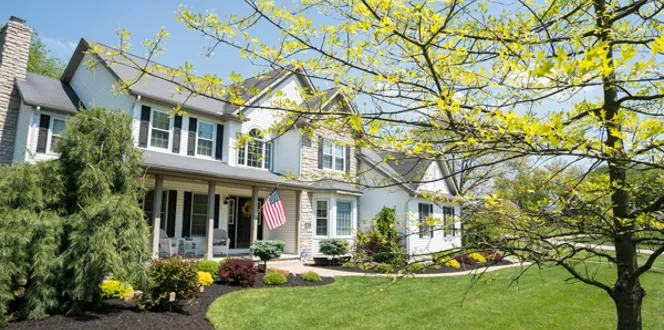Fa la la la! It’s the most wonderful time of the year–and our favorite part of the season! We get to head out with our family and wander amongst all the beautiful types of trees, looking for just the right one.
s you’re searching within a retail lot, do the fresh test! Run your fingers along the needles, grab the branches, and bounce the tree a little. If many needles fall off, the tree was cut long ago and has not gotten enough water, so find another! Another option is to roll up your sleeves and select a tree from a choose-and-cut farm, which can result in a cheaper, fresher tree.
However, if you decide to find your perfect tree, having prior knowledge about the different types will expedite the search. Options may vary based on your location and retailer distribution, but without further ado, here are the pros and cons of the top 10 most common Christmas tree types.
What Are The Advantages & Drawbacks Of The Most Common Christmas Tree Types?
1. Balsam Fir
Pros: Classic, strong Christmas tree scent that lasts; great needle retention; symmetrical pyramid shape
Cons: May struggle with heavy ornaments due to flexible branches
2. Douglas-Fir
- Pros: Super easy to find; beautiful light green needles that are soft to the touch and sweetly scented; usually affordable; good needle retention with adequate water
- Cons: Can’t hold heavy ornaments well
3. Fraser Fir
- Pros: Very fragrant all season; great needle retention; can hold heavy ornaments thanks to its sturdy limbs
- Cons: Looks dense and compact
4. Noble Fir
- Pros: Great needle retention, great at holding heavy ornaments; classic looking and smelling tree
- Cons: Can be more expensive because it takes a long time to grow
5. White (Concolor) Fir
Pros: Light blue-green, citrus-scented needles that smell all season; soft-to-the-touch needles with great retention
Cons: Can be more expensive because it takes a long time to grow
6. Blue Spruce
- Pros: Beautiful silvery-blue needles; incredibly symmetrical tree shape; Good needle retention with adequate water; great at holding lots of heavy ornaments
- Cons: Sharp needles; not much fragrance
7. Norway Spruce
Pros: Gorgeous forest-green needles; mild, pleasing scent; cone-shaped tree
Cons: Loses sharp needles easily
8. White (Black Hills) Spruce
Pros: Gray-green needles, good needle retention with adequate water; holds heavy ornaments well
Cons: Needles can smell bad, like skunk or cat pee, when crushed
9. Scots or Scotch Pine
Pros: One of the most popular Christmas trees; Great needle retention; long-lasting pine scent
Cons: Lack-luster color; crooked trunks are common
10. White Pine
- Pros: Blue-green needles that are soft to the touch; Great needle retention; usually affordable; good alternative for those sensitive to strong pine scents
- Cons: Subtle scent; can’t hold heavy ornaments; can wilt if lacking water
Let’s Talk About What’s Most Important–The Best-Smelling Christmas Tree Types!
For a classic scent, go for the balsam fir–or really any fir. Or go unique with the white fir, which smells like citrus! Pines are generally fragrant, but avoid those unscented spruce trees!





